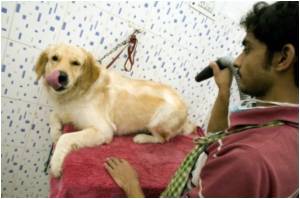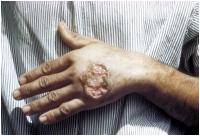Chagas disease, for example, is caused by a parasite that roams with only limited control among the rural poor in Latin America.

Kitron has been researching Chagas disease in remote communities of northern Argentina for the past 10 years. "One of our most significant findings is the importance of dogs in both the spread of the disease, and the potential to help control it," he says, explaining that dogs can make good sentinels for health officials monitoring T. cruzi transmission.
Chagas disease begins as an acute infection that can subside on its own. In one out of three cases, however, the infection persists and can go unnoticed for decades, until it causes complications such as heart failure, digestive problems and sudden cardiac death. The condition affects 10 to 12 million people in Latin America, killing more than 15,000 a year.
Human migration has moved Chagas disease around the globe: U.S. blood banks must now screen donors for T. cruzi. And bugs travel hidden in people's luggage to new places such as Patagonia in southern Argentina.
Kitron is collaborating with Ricardo Gürtler of the University of Buenos Aires on a research project funded through a joint NIH-NSF program on the ecology of infectious diseases. Their work in Argentina's Chaco province is included in a June 24 special supplement of Nature, devoted to the topic of Chagas disease.
"We are interested in answering scientific questions, but we also want to help reduce the risk and the impact of the disease on the rural population," Kitron says.
Advertisement
The researchers have shown, for example, that people with fewer than two dogs in a household are unlikely to become infected. It turns out that dogs are 14 times more effective at spreading Chagas disease than humans.
Advertisement
An alternative may be to identify dogs that are most at risk of remaining infectious for a long period of time. These "super spreaders" could be targeted with insecticide collars. Research is also ongoing for a vaccine against T. cruzi in mongrel dogs.
Source-Eurekalert









